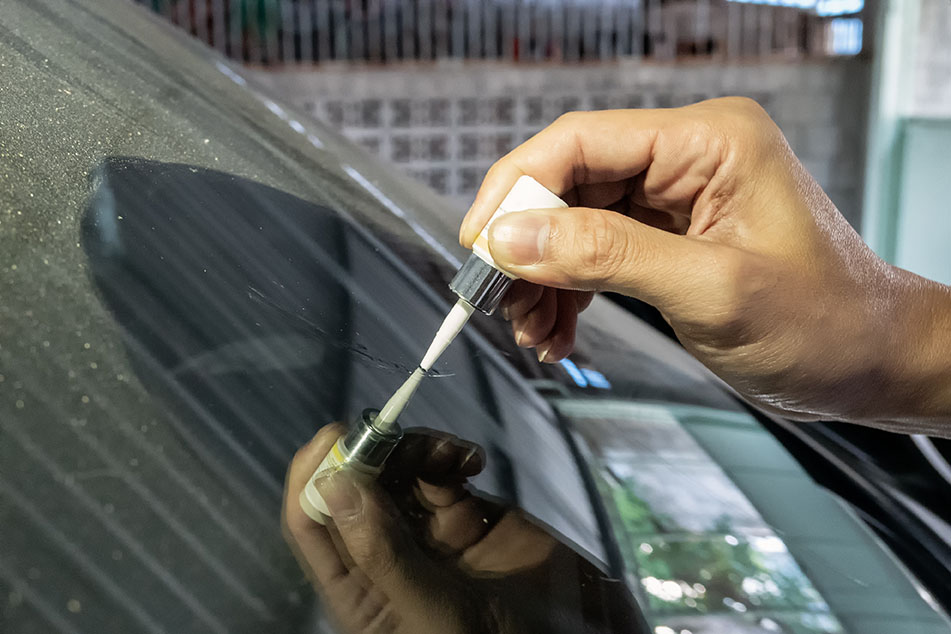
Can you repair a chip in a house window? Yes, absolutely! A chipped window, while seemingly minor, can compromise the structural integrity of your home and even pose safety concerns. Repairing a chipped window yourself is possible, especially if it’s a small chip, but it requires the right approach and materials. This thorough guide will walk you through the process of repairing a chipped window, from initial assessment to final touch-ups. We’ll discuss various methods, highlight common problems homeowners face, and ultimately offer you with a clear action plan.
Initial Assessment and Preparation
determineing the Extent of Damage
Determining the severity of the chip is critical. A small, hairline crack might require a simple repair, while a large, jagged chip might necessitate a more extensive approach, perhaps even replacement. Consider the size, shape, and location of the chip. Is the chip near the frame? Is it in a high-traffic area? Taking these factors into account is crucial to determine the appropriate approach.
Gathering Necessary Materials
Gathering the right tools and materials is essential. For smaller chips, you might only need a glass repair kit, including epoxy, a scraper, and a cleaning solution. For larger chips, you might need additional materials such as putty, glazing compound, or specialized window repair tools. Ensure you have all the supplies before you start. This will prevent disruptions during the process and ultimately save you time and frustration.
Repairing Small Chips
Using Epoxy Kits
Epoxy kits are a convenient and effective solution for smaller chips. Follow the instructions carefully. Clean the chip and surrounding area thoroughly. Apply the epoxy carefully to the chip, ensuring complete filling. A small, clean, dry area for the repair is ideal. Use a clean, dry cloth to wipe away any excess epoxy. Allow it to cure thoroughly according to the manufacturer’s instructions. This step is vital for optimal bonding and strength.
Applying Putty
For slightly larger chips, putty can be an effective repair method. Apply the putty evenly over the chip, then use a utility knife or scraper to shape and smooth it to match the surrounding glass. Ensure the putty is properly bonded with the glass. It’s crucial to use the correct type of putty and follow instructions for a achievementful outcome.
Addressing Larger Cracks and Chips
Professional Window Repair Services
For larger cracks or chips that compromise the window’s structural integrity or involve the frame, professional window repair services are highly recommended. Professionals have the specialized tools, skills, and experience to handle complex repairs. If you are uncomfortable doing this yourself or the damage is significant, don’t hesitate to call a professional. This avoids potential complications and ensures a reliable solution.
Using Glazing Compound
Glazing compound is a powerful alternative for handling medium-sized chips or cracks. Ensure you apply it smoothly, filling the void. Smooth the compound to match the surface, making the repair as seamless as possible.
Preventative Measures and Safety Precautions
Inspecting Your Windows Regularly
Regular inspections are key for determineing minor damage early on. This helps to avoid potential safety concerns and allows you to implement repairs before the problem worsens. Regular maintenance can prevent structural and safety risks.
Protecting Your Windows from Impact
Take preventative measures to protect your windows from impact damage. Consider installing protective films or window guards, especially in areas prone to debris or high-traffic areas. These can help to significantly reduce the risk of window damage.
Related Post : How Much Does It Cost To Repair Hail Damage
DIY vs. Professional Repair
Cost Comparison
Analyzing the cost-benefit ratio of DIY versus professional repair is crucial. Consider the cost of materials, tools, and your time against the potential cost of professional service. Sometimes a professional service is the better investment in terms of time and cost.
Skill Level and Experience
Assess your skill level and experience in home repairs. If you lack the necessary skills or experience, hiring a professional may be the safest and most efficient option.
Frequently Asked querys
What are the signs of a damaged window that needs repair?
Visible chips, cracks, or breaks in the glass are obvious signs. Loose panes, distorted frames, or the presence of rattling noises are also indicators of structural issues. It is crucial to address these problems promptly. You may also experience a noticeable reduction in the energy efficiency of the window.
Can I repair a large chip in my house window myself?
While some small chips can be repaired by homeowners, large chips that go beyond the edge of the glass are often optimal handled by professionals. Professionals have the tools and expertise to ensure structural integrity is preserved, which is especially crucial when dealing with large or complicated damages.
What is the optimal material for repairing a house window?
The optimal material for window repair often depends on the size and severity of the chip. For smaller chips, epoxy kits can be effective. For larger cracks, glazing compounds might be the preferred choice. If the damage goes beyond the glass and includes the frame, professional assistance is strongly recommended.
In conclusion, repairing a chipped window involves careful assessment, meticulous preparation, and precise execution. By understanding the varied repair techniques and materials, homeowners can effectively address the issue and restore the structural integrity and aesthetics of their windows. Remember to prioritize safety and follow professional guidance where needed. For a complimentary quote or professional repair, contact a local window repair specialist today!